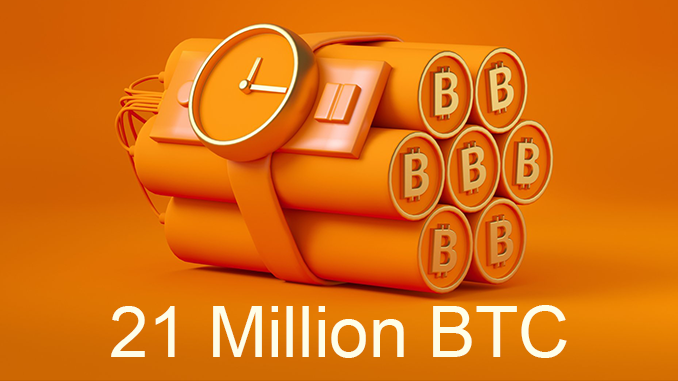
One of the main arguments in favor of Bitcoin as a stable value store is the maximum number of 21 million BTCs defined in the code. Currently, a good 18.4 million Bitcoins have already been mined. What can be expected when 21 million BTC are reached?
Bitcoin Halving in May showed many interested parties for the first time how the maximum number of 21 million Bitcoins is defined in the BTC concept and why the artificial shortage makes sense. Bitcoin wants to automatically fight inflation and not even be tempted to reprint money in times of crisis. This is why Bitcoin is considered “digital gold” and an attractive store of value. But that raises the question on the other side: If all 21 million BTCs were mined by miners in the future, what scenarios could happen?
21 million Bitcoin mined – and then?
The Bitcoin Halving, which takes place approximately every four years, halves the number of BTCs that miners receive as rewards (block rewards) for unlocking a new block in the blockchain. This mechanism ensures that the number of new Bitcoin coming into circulation is steadily reduced, i.e. the speed of the process decreases. All 21 million BTCs are expected to be mined in 2140. Block rewards are usually the biggest incentive for miners to do business. At the moment, they receive about 900 BTC a day worth the equivalent of about 8.5 million US dollars at the current daily rate. So, will miners give up their activities if falling prices make mining unprofitable or reaching the maximum of 21 million Bitcoin pointless?
No, because miners will not only find the block rewards in new blocks, but also transaction fees. These can be translated as transfer fees and are paid with each transaction to be validated and documented in the new block. Currently, a total of around 30 to 50 Bitcoin are accrued daily as transaction fees, equivalent to almost 500,000 US dollars. On normal trading days they are therefore a sideline business for miners. However, the typical transaction fees at BTC fluctuate, and in boom times even fluctuate considerably. This is because the transaction fees are basically used to hold an auction in real time to determine which transfers are processed first. Miners prefer to accept those transfers where higher transaction fees than average are offered. When Bitcoin set off for its all-time high of $20,000 in December 2017, the transaction fees on offer shot up, reaching peaks of $45 and giving miners more than $20 million in one day. By comparison, in June 2020, the average transaction fee for a transfer is around $1 on most days, and these fees for all transfers together amount to less than $1 million per day.
From this market-driven automatism it becomes clear: For Miner, the often underestimated transaction fees could become the driving force and stand for 100 percent of their revenues after 2140. Without Miner and its computer capacities, Bitcoin’s network would stand still, which would enable it to increase prices for validating transfers in line with the market situation. The pessimistic scenario that Miner will cease operations is unlikely. Because it would also mean that BTCs could no longer be transferred, or only very slowly. You can find out at Bitcoinfee at which transaction fees you can expect to receive confirmation of a transfer from Bitcoin on a daily basis.
Another future scenario is circulating in connection with block rewards, transaction fees and the maximum number of 21 million BTC. There are experts who believe that it is possible to implement changes in the Bitcoin protocol that will allow mining with significantly less computing capacity. As with Ethereum (ETH), for example, this would probably mean switching from proof-of-work to proof-of-stake. However, the history of Bitcoin has shown that splintering off due to protocol changes has led to losses in value of the “renegade” crypto currencies. Bitcoin Cash is the warning prime example of this. Based on this experience, it seems unlikely that a large majority of the BTC community will engage in the experiment of far-reaching protocol changes.
Conclusion: Maximum number of 21 million BTC – tending to drive prices for Bitcoin
For a good decade now, the ingenious concept of Bitcoin with maximum BTC and the carefully balanced mechanisms of Bitcoin Halving, Block Rewards and Transaction Fees has proven itself in practice. The demand for BTC is increasing and at the same time the commodity is becoming scarcer. Like gold, this supports and drives the price of Bitcoin. The transaction fees also provide a monetary incentive for miners to keep the block chain of BTC stable forever. As an investor, don’t be irritated by dystopian predictions that want to predict a collapse of Bitcoin when the maximum of 21 million BTC is reached. In reality, the opposite is true: It is precisely the eternally guaranteed maximum amount of 21 million Bitcoin that makes BTC so attractive as a value store independent of central banks.
Best place to buy Bitcoin:

Leave a Reply